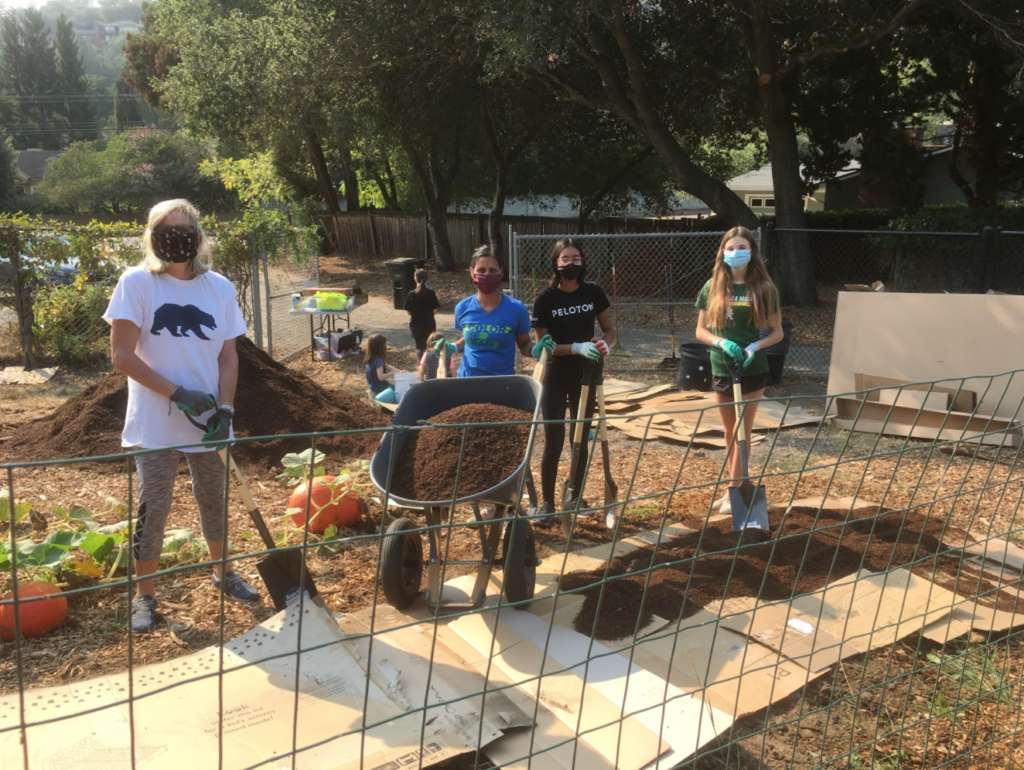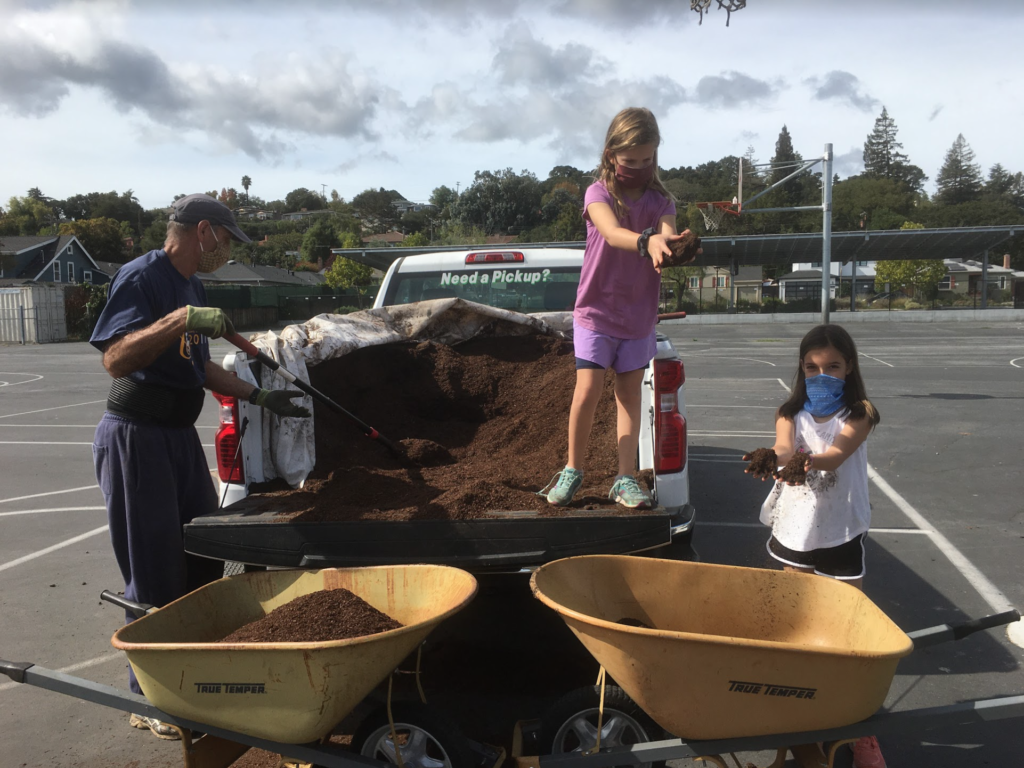Written by Nicole Shimizu, Communications and Outreach Coordinator

A consequence of the increasing number of people living in urban areas has been a decrease in experiences with nature. The US alone reported that 80.8% of its population was concentrated in urban areas in 2010 (World Health Organization). This is troubling considering the problems associated with urban living including unhealthy diets, sedentary lifestyles, and increased levels of social and psychological stress (Soga et al., 2017). A remedy to this problem lies within direct contact with natural environments. Exposure to natural environments has been recognized as a form of preventative healthcare, reducing depression and anxiety symptoms, diabetes, and obesity. This is especially salient within children who, due to a lack of contact with nature, experience health and behavioral problems labeled “nature-deficit disorder” (Soga et al., 2017). According to an article written by Soga et al., an overwhelming body of research supports gardening’s positive effect on physical, psychological, and social health (2017). Gardening offers an accessible way for children to interact with nature, develop gardening skills, improve their health, encourage social skills, and increase their consumption of fruits and vegetables. It offers children an enriching experience that creates healthy habits and skills that have the potential to positively impact a child’s whole life from a young age.
In two case studies on community gardening in Flint, Michigan, the impact of involvement in community gardening among youth was analyzed. They found that the youth involved with the gardening effort experienced overwhelmingly positive effects. In both of these community gardens, the youth involved developed close intergenerational and peer relationships with members of their community, learned about responsibility and patience, acquired gardening skills, and learned to enjoy eating fresh fruits and vegetables. Overall, the programs led to positive youth development, healthy eating, and positive community contribution (Allen et al., 2008). These case studies in Flint demonstrate the positive effects on youth and communities that community gardening has.
A case study conducted by Evans et al. on gardening experience related increased gardening experience to increased vegetable preference and consumption among low-income elementary school students (2016). This is important since preferences for food and dietary habits in adulthood are established from an early age. Paired with the knowledge that diets rich in fruits and vegetables have important health benefits such as lower risk of coronary health disease and type 2 diabetes among others, encouraging healthy eating from a young age is imperative to ensure better quality of life, instill healthy habits, and as a preventative healthcare strategy. This study in particular shows the effectiveness of gardening in a school setting to provide educational opportunities and exposure to nutritious food. The results of the study showed that “Children who reported more gardening experiences consumed significantly more vegetables and reported a higher preference for vegetables” than those who had no gardening experience. Gardening both increases access to vegetables and decreases children’s reluctance to try new foods (Evans et al., 2016). Through this study, the positive effects of enjoyable gardening experiences on children’s nutrition and health are clear. School gardens are helpful in terms of encouraging healthier eating habits and should be implemented in schools to encourage healthier lifestyles and lower the risks of preventable diseases associated with unhealthy and less vegetable and fruit containing diets.
A similar study was conducted with an Oklahoma Cooperative Extension Service (OCES) after-school program in partnership with a rural school. The result of the garden program implementation was a significant increase in students’ vegetable consumption and physical activity. In addition, the garden environment encouraged more community involvement among “school teachers, parents, county OCES Master Gardeners, and local businesses” (Hermann et al., 2006). Looking at both the Flint, Michigan study and Oklahoma study and the benefits school gardens imparted on both communities indicates a clear connection between school gardens and the overall health and wellness of children.
Exposure to nature and natural environments has also been shown to be beneficial beyond education, community building, and healthy eating. According to a study done by Taylor et al. exposure to nature through leisure activities such as gardening helps to lessen children’s attention deficit symptoms (2001). The study concludes that contact with nature through gardening may “support attentional functioning in a population of [over 2 million children in America] who need attentional support” (Taylor et al., 2001). This study shows the diverse and healing benefits that gardening can offer to a spectrum of children. Taylor et al. add that their findings on the benefits of green spaces and nature are not limited to children with attention deficit disorder (2001). They state that “Optimal levels of attention functioning are essential for all children” to learn and achieve in school (Taylor et al., 2001).
Special considerations should be taken when discussing inclusion. Not only are community gardens impactful and important for youth of low socioeconomic backgrounds or children in general, they are also important in the education and social development of special needs youth. A study done by Hazreena Hussein on gardens in relation to special needs youth demonstrates the possible positive effects that garden exposure can have (2010). Gardens were used to educate children on sensory experience, wayfinding, mobility, social interaction, and mental development. All of these positive responses to gardens used as outdoor classrooms further support the positive effects of gardening on children.
The case studies referenced in this paper support the claim that children benefit from gardening. They learn hard skills such as gardening as well as soft skills such as communication, patience, and responsibility. Children who experience gardening are more likely to eat healthily which can lower their risk of health problems later in life. These benefits are a great way to combat the disconnect from nature that children experience as urban populations continue to grow. Overall, the findings support the physical, social, and developmental benefits of gardening for children.

Sources:
Allen, Julie Ober, et al. “Growing Vegetables and Values: Benefits of Neighborhood-Based Community Gardens for Youth Development and Nutrition.” Journal of Hunger & Environmental Nutrition, vol. 3, no. 4, 2008, pp. 418-439, https://doi-org.proxy.library.ucsb.edu:9443/10.1080/19320240802529169.
Evans, Alexandra, et al. “Previous Gardening Experience and Gardening Enjoyment Is Related to Vegetable Preferences and Consumption Among Low-Income Elementary School Children.” Journal of Nutrition Education and Behavior, vol. 48, no. 9, 2016, pp. 618-624, https://doi.org/10.1016/j.jneb.2016.06.011.
“GHO | By Country | United States of America – Statistics Summary (2002 – Present).” World Health Organization, World Health Organization, apps.who.int/gho/data/node.country.country-USA.
Hermann, Janice R., et al. “After-School Gardening Improves Children’s Reported Vegetable Intake and Physical Activity.” Journal of Nutrition Education and Behavior, vol. 38, no. 3, 2006, pp. 201-202, https://doi.org/10.1016/j.jneb.2006.02.002.
Hussein, Hazreena. “Using the sensory garden as a tool to enhance the educational development and social interaction of children with special needs.” Support for Learning, vol. 25, no. 1, 2010, pp. 25-31, http://www.csgn.org/sites/csgn.org/files/47829187.pdf.
Soga, Masashi, et al. “Gardening is beneficial for health: A meta-analysis.” Preventative Medicine Reports, vol. 5, 2017, pp. 92-99, https://doi.org/10.1016/j.pmedr.2016.11.007.
Taylor, Andrea Faber, et al. “Coping with add: The Surprising Connection to Green Play Settings.” Environment and Behavior, vol. 33, no. 1, 2001, pp. 54-77, https://doi-org.proxy.library.ucsb.edu:9443/10.1177/00139160121972864.



0 Comments